Common Shelduck
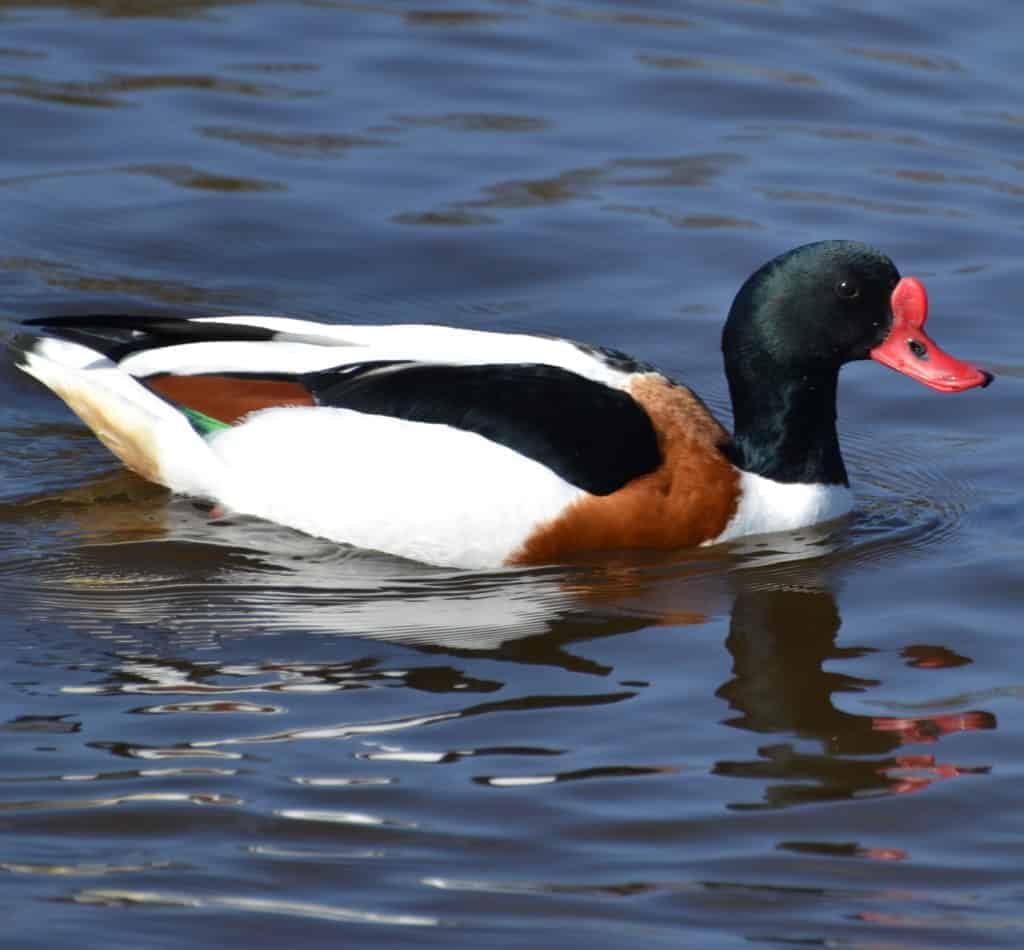
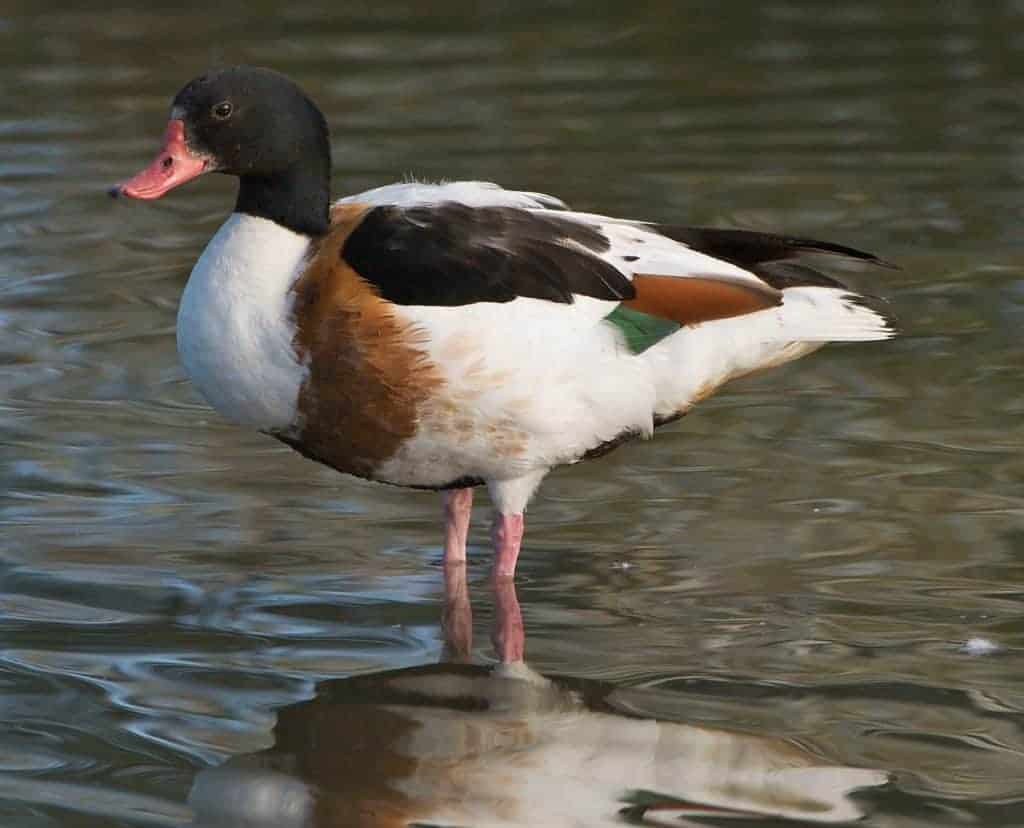
The knob on the bill of the drake Common Shelduck is more pronounced than on the duck, which usually has some white between the bill and eye.
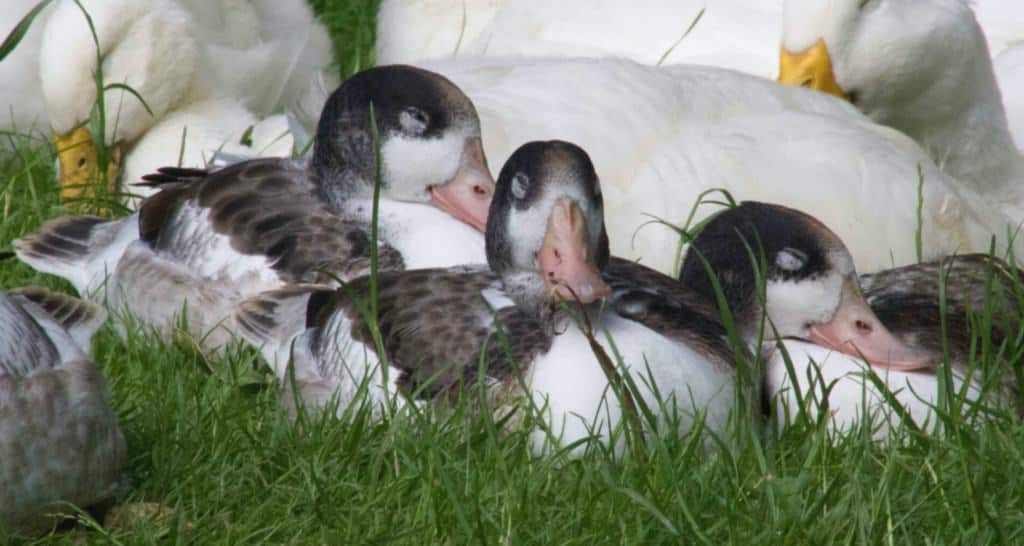
Tadorna tadorna
Common Shelduck are popular in many wildfowl collections. They are an attractive addition with their bold chestnut band across the breast and shoulders, glossy dark green head and neck, bright red bill and pink legs. The drake has a clear whistle, whereas the duck utters a hoarse quack.
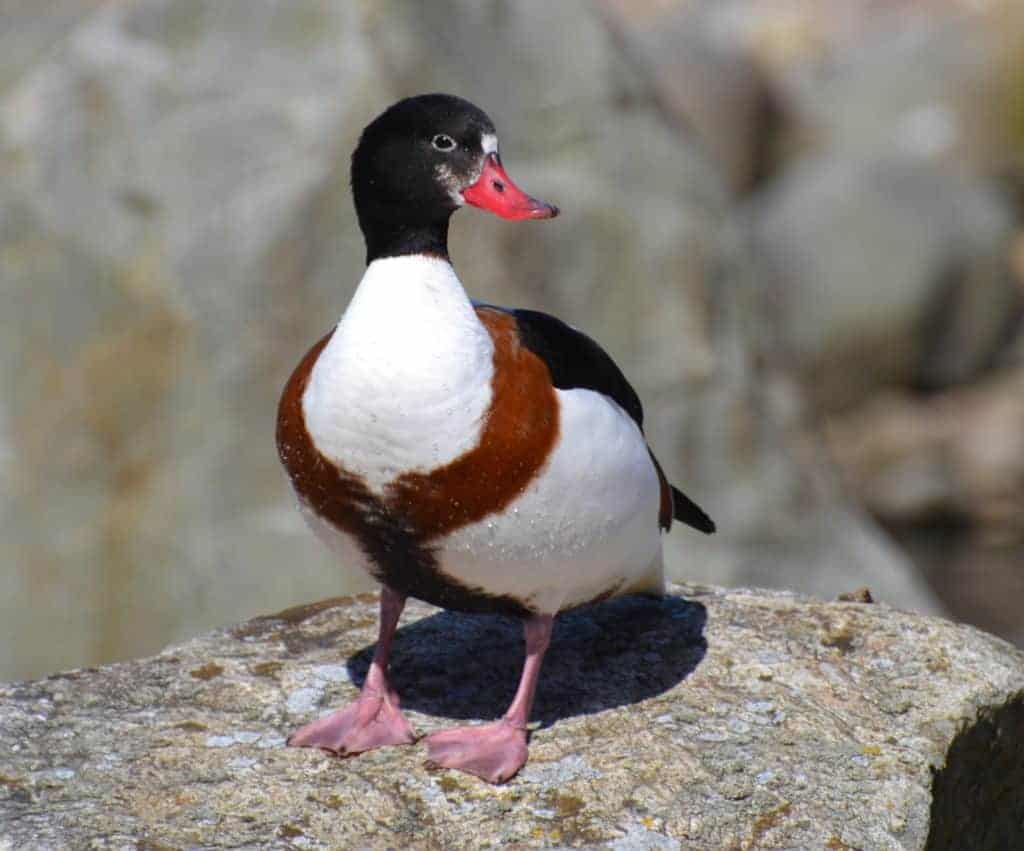
Although territorial, Shelduck do sometimes nest close to others, as seen on BBC’s Springwatch in June 2021.
Common Shelduck are more gregarious than other shelduck species and can be introduced to a mixed collection successfully. They are not well suited however to confined spaces, where they are likely to quarrel.
It is common around Britain where it has a preference for salt marshes, coastal mudflats and sandy estuaries. Nonetheless, there has been a moderate breeding population decline of 41% over 25 years here. 50–60% of the wintering UK population is found at ten or fewer sites, so it is considered localised. The UK holds 20–30% of the European population, so it is considered of international significance. For these reasons this species is Amber-listed in Britain.
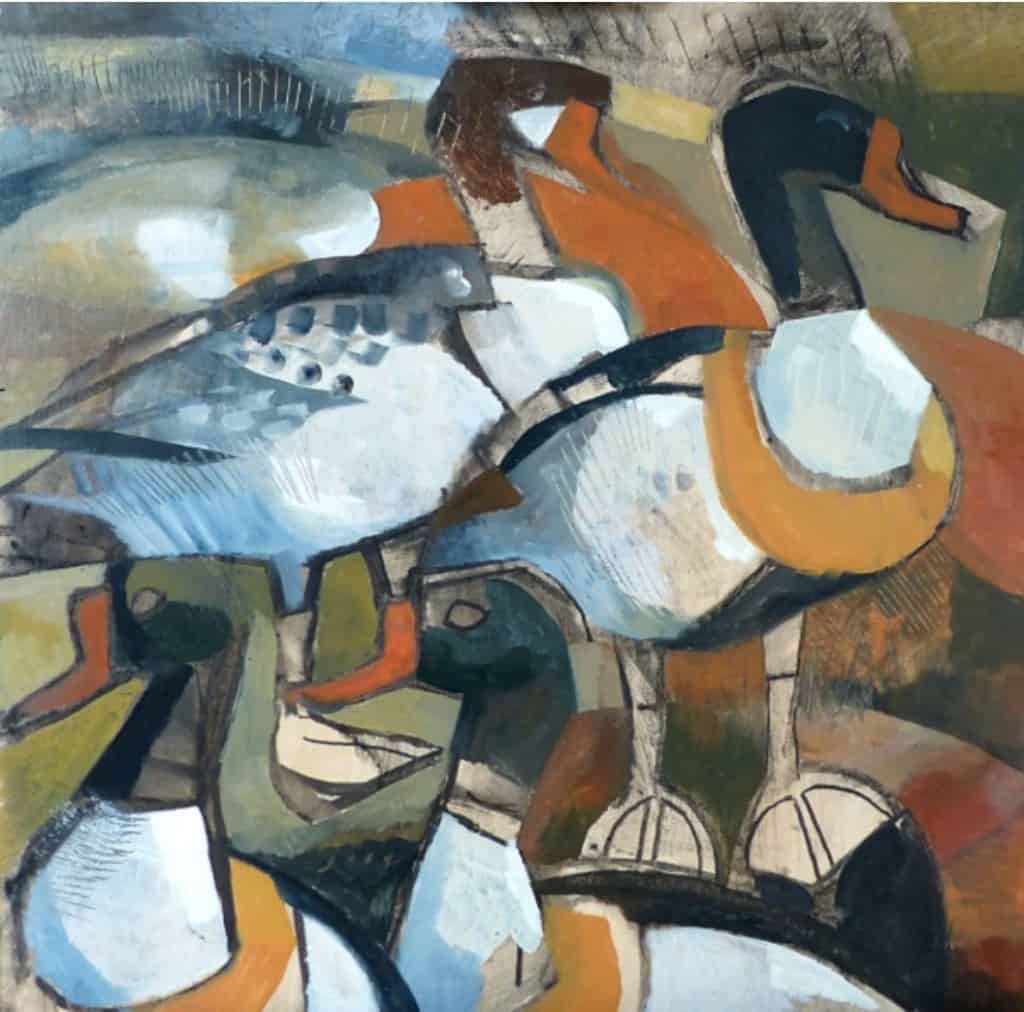
Common Shelduck prefer to nest in burrows and holes, where they lay a large clutch of 7–12 eggs and incubate for 30 days. In the wild, they often desert their ducklings at a young age, leaving them in crèches with just one or two adults to look after them.